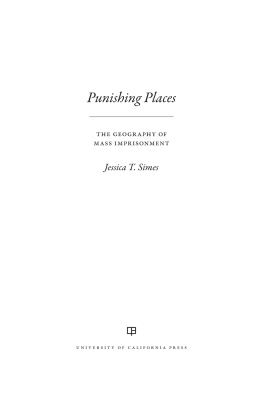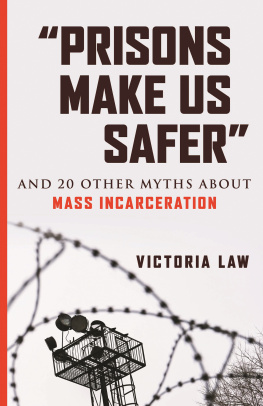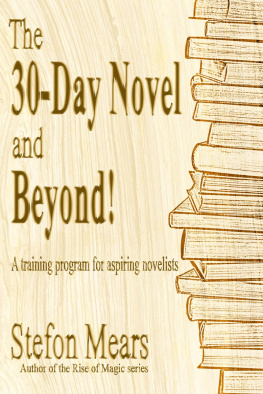Copyright 2015 by SAGE Publications, Inc.
All rights reserved. No part of this book may be reproduced or utilized in any form or by any means, electronic or mechanical, including photocopying, recording, or by any information storage and retrieval system, without permission in writing from the publisher.
FOR INFORMATION:
SAGE Publications, Inc.
2455 Teller Road
Thousand Oaks, California 91320
E-mail: order@sagepub.com
SAGE Publications Ltd.
1 Olivers Yard
55 City Road
London EC1Y 1SP
United Kingdom
SAGE Publications India Pvt. Ltd.
B 1/I 1 Mohan Cooperative Industrial Area
Mathura Road, New Delhi 110 044
India
SAGE Publications Asia-Pacific Pte. Ltd.
3 Church Street
#10-04 Samsung Hub
Singapore 049483
Acquisitions Editor: Jerry Westby
Editorial Assistant: Laura Kirkhuff
Production Editor: Kelly DeRosa
Copy Editor: Lynn Weber
Typesetter: Hurix Systems Pvt. Ltd.
Proofreader: Sue Irwin
Indexer: Scott Smiley
Cover Designer: Scott Van Atta
Marketing Manager: Terra Schultz
Printed in the United States of America
Cataloging-in-publication data is available for this title from the Library of Congress.
ISBN: 978-1-4833-1672-7
This book is printed on acid-free paper.
14 15 16 17 18 10 9 8 7 6 5 4 3 2 1
Preface
The idea for this book emerged from several different sources. Prison populations have grown by historically unprecedented amounts in recent decades. Accordingly, scholars increasingly have focused their attention on this growth. Some work has examined the factors that contributed to mass incarceration. Other work has focused on desistance from offending. One particular focus to which scholars have devoted substantial attention has been prisoner reentry. During the 1990s, researchers highlighted that much remained unknown about prisoners and individuals experiences both during and after incarceration. Previous scholarship focused on reintegration.
The newer generation of research has centered on the idea that reentry is a process. Inmates leave prison and experience a range of challenges, and they return to diverse and difficult social contexts. Concerns about recidivism are, of course, prominent. But the burgeoning literature on reentry also has highlighted that recidivism constitutes only one of a range of outcomesthere are others, such as unemployment, homelessness, and family reunificationthat warrant attention from policy makers, practitioners, and scholars. This literature has also highlighted that a discussion of reentry is incomplete without an understanding of mass incarceration and the punitive turn in criminal justice.
Our own interest and involvement in the study of prisoner reentry stems from a number of experiences. Daniel has spent almost two decades studying the causes of crime, evaluating crime and criminal justice programs and policies, and investigating many aspects of reentry as a social problem. He brings with him a sociological background and an emphasis on the use and development of social theory to understand offending and responses to it. At the same time, he brings a strong appreciation for the unique insights that those on the groundcommunity residents, practitioners, law enforcement agents, and court and correctional system personnelhave for understanding criminal behavior and how to effectively respond to it. In part, this sensibility comes from his experience working with delinquent youth. It also comes from his evaluation research experiences, which served to highlight how theory can be developed from the ground up based on practitioner accounts as well as from the top down based on insights from social science.
For Joshua, the interest in reentry stems from immersion in research on inmate prison experiences and their consequences for behavior during and after incarceration. When he began conducting research on these experiences, it became clear that far too little is known about what happens to inmates and the relative effectiveness of different types of sanctions. These lines of research contributed to his focus on reentry and the fascinating but troubling issues that attend reentry and, more broadly, punishment.
His interest stems, too, from personal experiences. His father worked in law enforcement and then as a clinical addictions counselor. As a result, Joshua grew up around homeless and drug-addicted populations, the bulk of whom had spent substantial time in jails and prisons. His father provided assistance to these individuals, mostly men, which involved helping them to find jobs as dishwashers, cooks, and custodians and directing them to social services and health care. However, many of the men remained addicted and unemployed and eventually returned to jail or prison. In most cases, one could point to personal failings as well as to social disadvantage as causes of these outcomes. What in particular, though, leads individuals to offend and to do so even after they have been incarcerated several times? Answering this question is central to advancing theories of offending and to improving public safety.
A somewhat more eclectic range of factors led Daniel to his interest in reentry. The interest stems in part from being cold, thinking about reality television shows, having worked at residential facilities, and collaborating with criminal justice practitioners. It stems, too, from a desire to advance criminological theory. An explanation is in order.
Although I (Daniel) grew up in New Hampshire, I cant say that I enjoyed the cold. For that reason, I should have enjoyed Austin, Texas, where I undertook my graduate studies. I did. Even so, Austin was a cold place. Really. The university spared no expense when it came to air conditioning. I wore a sweatshirt on a regular basis, then would take it off when I went outside. I have never liked the cold, not in New Hampshire and not in Texas. My brother, David, could wear no gloves in freezing weather and his fingers would be fine at the end of a run. Mine would require hours of exposure to the wood stove before they would thaw, and that was after wearing huge, wind-resistant gloves. Whatever toughness I may have, it is not cold tough.
Why does that matter? When I worked in Washington, DC, at the Urban Institute, it was a rare day that I did not see homeless people. In the winter. In the cold. On the street. I had a long shirt, sweater, coat, hat, and more on. I would have worn a wrap-around electric warmer if such existed. The selfless part of me was, and remains, angry and pained by the scale of homelessness that exists in DC and in many metropolitan areas. The selfish part of me wondered how I would fare out on the street, in the cold.








